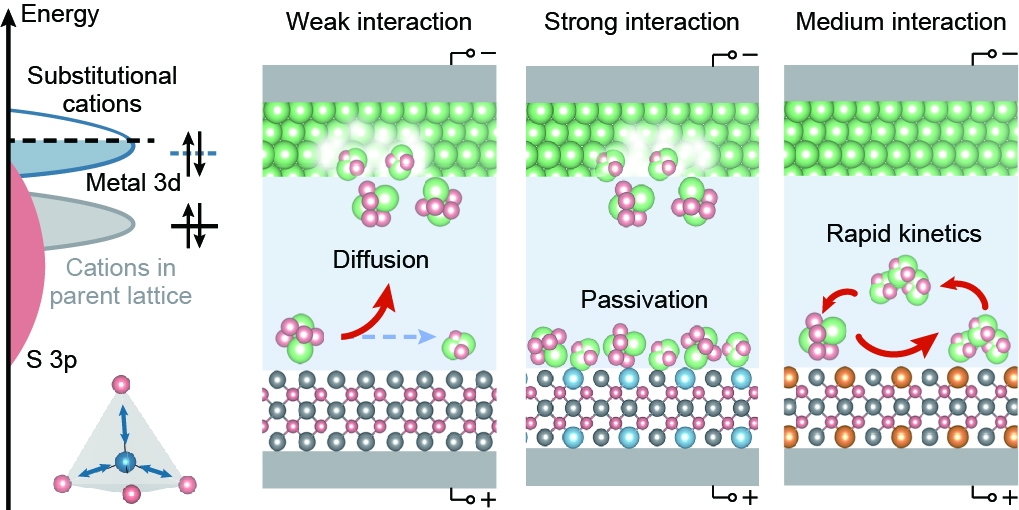The study was published in Nature Catalysis on June 16 (DOI: 10.1038/s41929-022-00804-4).
The Li–S system shows great potential for next-generation batteries due to its high energy density. However, the sluggish kinetics of polysulfide conversion reactions leads to the "shuttling effect" and limits rate capability and cyclability, which hinder practical applications.
Recently, many experimental studies have reported that catalytic conversion of polysulfides plays a critical role in enhancing kinetics and suppressing polysulfide shuttling. Despite significant improvement in the electrochemical performance of Li–S batteries, studies on catalysts have heavily relied on trial and error and the governing principle has remained elusive.
In this study, the researchers demonstrated that, although a strong adsorption of polysulfides may lower the activation barrier for polysulfide conversion, it in turn impedes the desorption of products. This is due to the scaling principle since polysulfides (from Li2S8 to Li2S2/Li2S) are sequentially adsorbed onto the same sites during charge/discharge.
To regulate the adsorption energy and maximize catalytic efficiency, they doped transition metal into the crystallographic framework of ZnS. The dopants were placed in stressed states and their d-orbitals were tuned accordingly. As a result, the adsorption energy had a linear relationship with the d-band center of dopants, but catalytic activity showed a "volcano-shaped" trend.
Such a discovery indicates that a long-standing assumption of strengthening adsorption to enhance catalysis is invalid when desorption is rate limiting. "Catalysts and absorbents in a Li–S battery should be designed separately to improve the performance of Li–S batteries," said Prof. ZHANG.
This study offers a rational basis for understanding the catalytic process of Li–S batteries at atomic or molecular levels and for designing new catalysts.
It was supported by the National Key Research and Development Program of China, the National Natural Science Foundation of China, and the U. S. Department of Energy (DOE).

Schematic diagram of design principles for high-efficient lithium–sulfur catalysts (Image by SHEN Zihan)
Media Contact:
LI Xiangyu
Public Information Officer
Institute of Process Engineering, Chinese Academy of Sciences, Beijing 100190, P. R. China.
E-mail:xiangyuli@ipe.ac.cn
Tel: 86-10-82544826
 Search
Search




 京公网安备110402500047号
京公网安备110402500047号